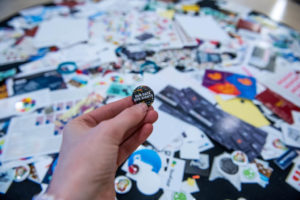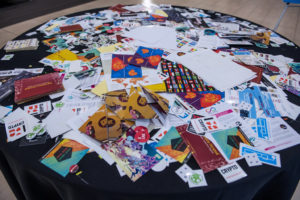Least Authoritarians attended RightsCon – the world’s leading conference on human rights in the digital age – that took place in Toronto from May 16th to May 18th, 2018. Like every year, RightsCon Toronto brought together a diverse set of social tech, digital rights policy, and open internet advocacy groups, as well as representatives from private companies, academia, and governments. It provided a great opportunity to Least Authoritarians to engage with the community, network, and build valuable connections.
One of the highlights of our conference attendance was the usability testing for our Simple Secure Storage Service S4 sign-up process, Gridsync – a graphical user interface for Tahoe-LAFS – and the Least Authority website. Together with Allon Bar, a digital rights and design consultant, Least Authority’s team which included Chris Wood, Liz Steininger, and Lauri Hmel ran the tests to identify usability issues and to receive valuable suggestions and constructive recommendations for improving and optimizing our products.
At Least Authority we believe in integrating user feedback as fundamental to developing our product. To make S4 more user-friendly, we followed an iterative approach. We conducted S4 usability tests after we released Gridsync. Based on the users’ feedback, Chris Wood – the author of Gridsync – carried out numerous bug-fixes and performance improvements and added new features. RightsCon Toronto provided us a great setting to continue with our iterative method, even more so as its attendees may be especially attuned to privacy sensitivities. We conducted the tests to see how target users interact with our website and Gridsync after the addition of new features, hear the users describe where they got stuck or confused and discover other pain points.
The participants who were recruited from among the conference attendees helped us to uncover a broad range of usability issues. Some of the things did work well during the test. For instance, the testers mostly had little trouble signing up, adding folders to the grid, exporting a recovery key and, when necessary, restoring their folders. Some of the testers also realized how little information they had to share about themselves in order to use S4.
However, the tests also revealed that there are a range of pressing issues that should be addressed – a very useful outcome of the event. The participants were unclear about what is “local” and what is “in the cloud” and how both sides interact. The term “stored remotely” made some people think a folder was on their computer, while others thought it was in the cloud. It was clear from the participants’ questions that the key differentiator of our product S4 – that we do not have the ability to read or modify the data users upload – was not self-evident to the testers. We also figured out that in the design process, there are areas that require further explanation to reduce ambiguity. The user feedback indicated that a more visual rather than strictly text-based approach to explaining how the program works could enhance people’s understanding of it. There were some smaller issues too like when setting up Gridsync many participants could not find the necessary invite code on the website, while the grid selection and especially the ‘connect another device’ buttons on the toolbar seemed to confuse people. On the website and in the software, the variety of names (Least Authority, Gridsync, S4, Tahoe-LAFS) that participants came across raised questions. A description of the above-mentioned issues and many others can be found in the comprehensive User Testing report created by Allon Bar. The report also outlines suggestions based on users’ feedback.
With the findings from the RightsCon Toronto usability testing, we will revisit our design, address issues that we discovered, and make decisions towards improving our product and website user experience.
Our goal is to build an affordable, ethical, usable, and lasting data storage solution and to let the control of the data stay where it belongs – in the hands of the user. We are constantly working towards that goal. We also need user support to achieve that goal. Our interaction with users and potential users help us define the problems and get a feel for what works and, equally, what doesn’t. If you want to be a part of our usability tests or if you have any questions about our usability tests please send them our way at contactus@leastauthority.com.


